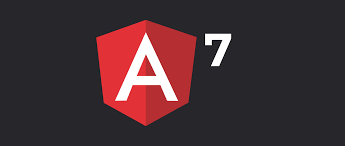
Most web applications require to run in different environments before they make their way to production. You might need a build for your favorite QA team to perform some special tests, or a specific build to run on your continuous integration servers for instance.
As a result of this, we would need builds of different configurations: Different server URLs, different constants, different logging options, etc.
Angular CLI offers an environment feature that allows running builds targeted at specific environments for specific requirements. For instance, here is how you would run a build for production:
ng build --env=prod // up to Angular 5
Update: With Angular 6 and Above, the command is now:
ng build --configuration=production // new versions
The prod flag in the above code refers to the prod (production in v6 and above) property of the environments section of .angular-cli.json before v6:(now angular.json in v6 and above), which has two options by default: dev and prod
"environments": {
"dev": "environments/environment.ts",
"prod": "environments/environment.prod.ts"
}
You can add as many environments as you need here and name them accordingly. For instance, if you need a assesment build option, just add the following entry in .angular-cli.json:
"environments": {
"dev": "environments/environment.ts",
"prod": "environments/environment.prod.ts",
"qa": "environments/environment.qa.ts"
}
For v6 and above, angular.json environments are now called configurations. Here is how to add a new qa environment after v6:
"configurations": {
"production": { ... },
"qa": {
"fileReplacements": [
{
"replace": "src/environments/environment.ts",
"with": "src/environments/environment.qa.ts"
}
]
}
}
Then you have to create the actual file environment.qa.ts in the environments directory.
Here is what the default environment.ts file for dev looks like:
// The file contents for the current environment will overwrite these during build.
// The build system defaults to the dev environment which uses `environment.ts`, but if you do
// `ng build --env=prod` then `environment.prod.ts` will be used instead.
// The list of which env maps to which file can be found in `.angular-cli.json`.
export const environment = {
production: false
};
The above environment object is where you would add any environment specific property. For instance, let’s add a server URL:
export const environment = {
production: false,
serverUrl: "http://dev.server.companyName.com"
};
Then all you have to do to provide a different URL for QA is to define that same property with the right value in environment.qa.ts:
export const environment = {
production: false,
serverUrl: "http://qa.server.companyName.com"
};
Now that your environments are defined, how do you use those properties in your code? Easy enough, all you have to do is import the environmentobject as follows:
import {environment} from '../../environments/environment';
@Injectable()
export class AuthService { API_URL: string = environment.serverUrl + '/theUrlForAPI' ;
Then when you run a build for QA, Angular CLI is going to use environment.qa.ts to read the environment.serverUrl property value and you’re all set to deploy that build to the QA environment.
My Name is Prateek Pandey. I am a Developer , as well as consultant and trainer for Angular where I help web developors learn and ease the stuff.
If you enjoyed this article, please share it! Thanks for your time and will check some other core features later.
